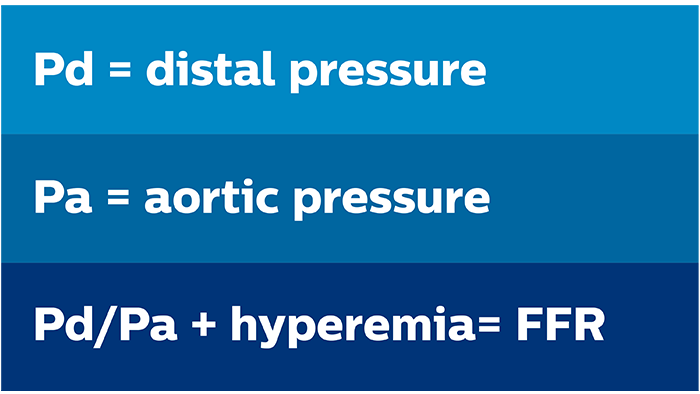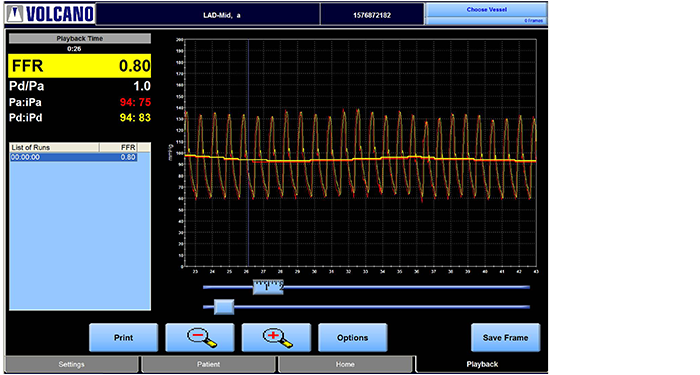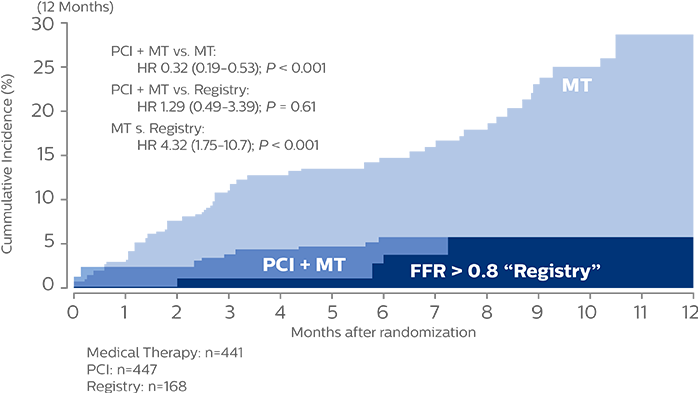Use FFR to help determine the culprit lesion.
What is FFR?
Fractional Flow Reserve measurement
FFR is easily measured during routine coronary angiography by using a pressure wire to calculate the ratio between coronary pressure distal to a coronary artery stenosis and aortic pressure under conditions of maximum myocardial hyperemia.1 This ratio represents the potential decrease in coronary flow distal to the coronary stenosis.
Various clinical studies demonstrate that physiologic lesion assessment by FFR to guide routine PCI is superior to current angiography guided treatment.5
FFR ischemia scale
An FFR lower than 0.75-0.80 is generally considered to be associated with myocardial ischemia.3
FAME I
FFR-guided procedures improved outcomes over angio-guided procedures at 1-year outcomes.3
FAME II
FAME II demonstrated that FFR-guided PCI resulted in significantly improved clinical outcomes at 1 year, compared to medical therapy alone.4
The Verrata pressure guide wire
One wire, one system, multi-modality

Resources
Downloadable iOS app





